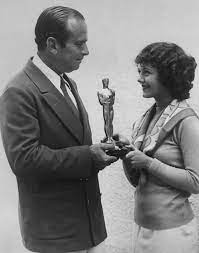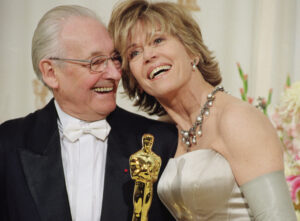Oscar – History of the American Academy Awards

Oscar – an award that is an object of desire for filmmakers around the world. The famous statuette measures more than 34 cm and weighs almost 4 kg. The American Film Academy has been awarding it since 1928. It depicts a knight holding a sword, which stands on a base shaped like a film reel. It’s been a long time since the first Academy Awards ceremony, held at the Roosevelt Hotel in Los Angeles, but the importance of the Academy Awards continues unabated, and the gala attracts millions of viewers every year. Here is a brief history of the Oscars.
Oscar – the origins of the Academy Awards
It all began on May 16, 1929, at the Roosevelt Hotel in Los Angeles, where the Oscars were first handed out for the previous year’s films. The ceremony lasted only 15 minutes, during which fifteen statuettes were handed out. The next gala saw a reduction in the number of awards, and it was decided that they would be given in seven categories: best picture, director, screenplay, cinematography, production design and for best actor and actress. In subsequent years, however, there was an expansion of the range of awards.
They were joined by editing, music, song and supporting roles. In 1939, best special effects was added to the Oscars, and in the 1940s documentary film, foreign language film and costume design. The sixth decade of the 20th century, in turn, opened the Oscars to sound effects. The early 1980s expanded the Academy Awards to include characterization, and the 21st century to include feature-length animation. Currently, there are 24 categories of the Oscars.

History of Oscars: Janet Gaynor receives first-ever Best Actress statuette from Douglas Fairbanks
Due to the growing popularity of the award and, consequently, the growing audience, the Academy Awards ceremonies have been held in theaters since the 1940s, until 2002 at the Dolby Theatre. The first ever award-winning film was William A. Wellman’s “Wings”, the statuette for directing went to Frank Borzage for “Seventh Heaven” and to Lewis Millestone for “Two Arabian Knights”. Best actor of the year went to Emil Jannings for his performance in “The Last Command,” and best actress went to Janet Gaynor.
Oscar – the history of the statuette and the process of awarding it
Who designed the famous statuette? The shape was conceived by MGM production designer Cedric Gibbons, while it was made by sculptor George Stanley. Interestingly, it was not immediately given the name Oscar. Until 1939, the figure was most often referred to as the “Academy Award.” To this day, the origin of the popularized term for the figurine is unknown. Bette Davis claimed that she was the one who named the statuette so in honor of her first husband: Harmon Oscar Nelson. There is also an anecdote according to which the Oscar was christened the statue by the Academy president’s secretary, Margaret Herrick. Namely, she supposedly stated that it reminded her of “Uncle Oscar”.
And what is Oscar made of? Tin, copper and antimony are used in its production and, of course, it is plated with 24K gold. Although it should be noted that during World War II the statuettes were much more modest: they were created simply from plaster.

The history of the Oscars is closely linked to the formation of the American Academy of Motion Picture Arts and Sciences (Academy). From the very beginning, it was its members who decided on the selection of nominees and the final awarding of the prize. This process has a two-stage character. Representatives of various film groups (directors, actors, etc.) each identify 5 aspiring awardees in a given category. This is followed by the second stage, which is a secret ballot. It is attended by all members of the Academy, who ultimately indicate the winners.
Poles awarded an Oscar
How is the participation of Poles in the world’s most famous film award? The first Oscar went to Leopold Stokowski, awarded in 1942 for his music for Disney’s “Fantasia”. Then the statuette was awarded in turn to Bronislaw Kaper for his music for “Lili,” Zbigniew Rybczynski (animated film “Tango”), Janusz Kaminski (cinematography for “Schindler’s List”), Allan Starski and Ewa Braun (set design and interior decoration). In 1998 the Oscar once again went to Janusz Kaminski, this time his cinematography for “Saving Private Ryan” was awarded. Our great director Andrzej Wajda lived to receive an honorary Academy Award in 1999. During the ceremony he began his speech with the famous sentence: “I will speak Polish, because I think in Polish.”
Roman Polanski won an Oscar for the poignant “The Pianist” in 2003. Subsequent years brought accolades for Jan A. P. Kaczmarek for his music for “The Dreamer,” the Polish-British “Peter and the Wolf” won in the animated short film category, and Pawel Pawlikowski was honored for best non-English language film for “Ida.”
Literature:
„Encyklopedia kina”, pod red. T. Lubelskiego, Kraków 2010.
K. Connolly, „Mroczna historia Hollywood”, przeł. M. Wyrwas-Wiśniewska, Ożarów Mazowiecki, 2014.
